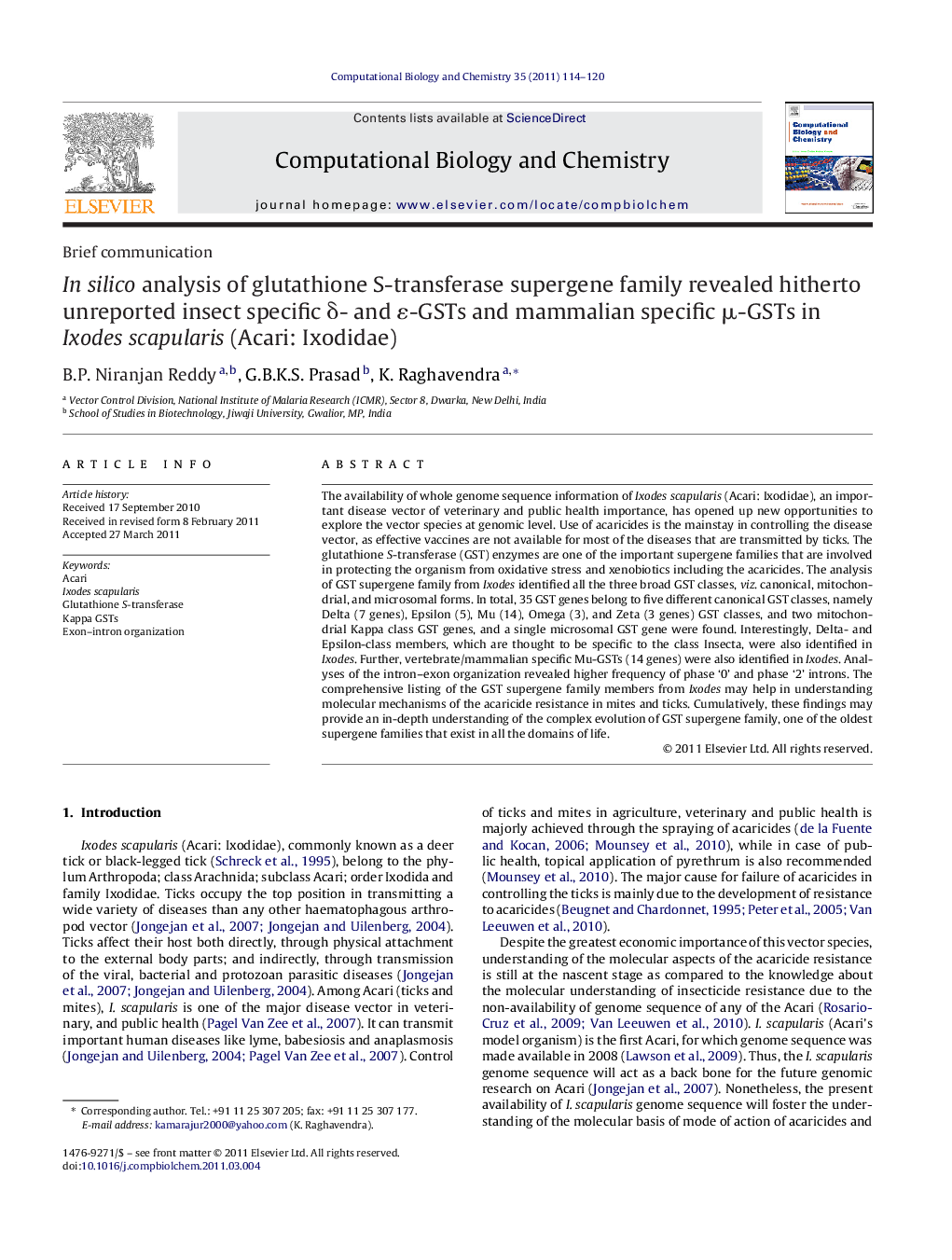| Article ID | Journal | Published Year | Pages | File Type |
|---|---|---|---|---|
| 15236 | Computational Biology and Chemistry | 2011 | 7 Pages |
The availability of whole genome sequence information of Ixodes scapularis (Acari: Ixodidae), an important disease vector of veterinary and public health importance, has opened up new opportunities to explore the vector species at genomic level. Use of acaricides is the mainstay in controlling the disease vector, as effective vaccines are not available for most of the diseases that are transmitted by ticks. The glutathione S-transferase (GST) enzymes are one of the important supergene families that are involved in protecting the organism from oxidative stress and xenobiotics including the acaricides. The analysis of GST supergene family from Ixodes identified all the three broad GST classes, viz. canonical, mitochondrial, and microsomal forms. In total, 35 GST genes belong to five different canonical GST classes, namely Delta (7 genes), Epsilon (5), Mu (14), Omega (3), and Zeta (3 genes) GST classes, and two mitochondrial Kappa class GST genes, and a single microsomal GST gene were found. Interestingly, Delta- and Epsilon-class members, which are thought to be specific to the class Insecta, were also identified in Ixodes. Further, vertebrate/mammalian specific Mu-GSTs (14 genes) were also identified in Ixodes. Analyses of the intron–exon organization revealed higher frequency of phase ‘0’ and phase ‘2’ introns. The comprehensive listing of the GST supergene family members from Ixodes may help in understanding molecular mechanisms of the acaricide resistance in mites and ticks. Cumulatively, these findings may provide an in-depth understanding of the complex evolution of GST supergene family, one of the oldest supergene families that exist in all the domains of life.
Graphical abstractFigure optionsDownload full-size imageDownload as PowerPoint slideHighlights► The analysis of Ixodes scapularis GST superfamily revealed the presence 35 genes belonging to seven different GST classes. ► Delta and Epsilon, and Mu GST classes which were thought to be specific to insects and mammals, respectively, were identified. ► The study revealed that Ixodes has lost two of the functionally important gene families, namely Theta-and Sigma-GSTs. ► We conclude that this information may be helpful in molecular characterization of the acaricide resistance.
